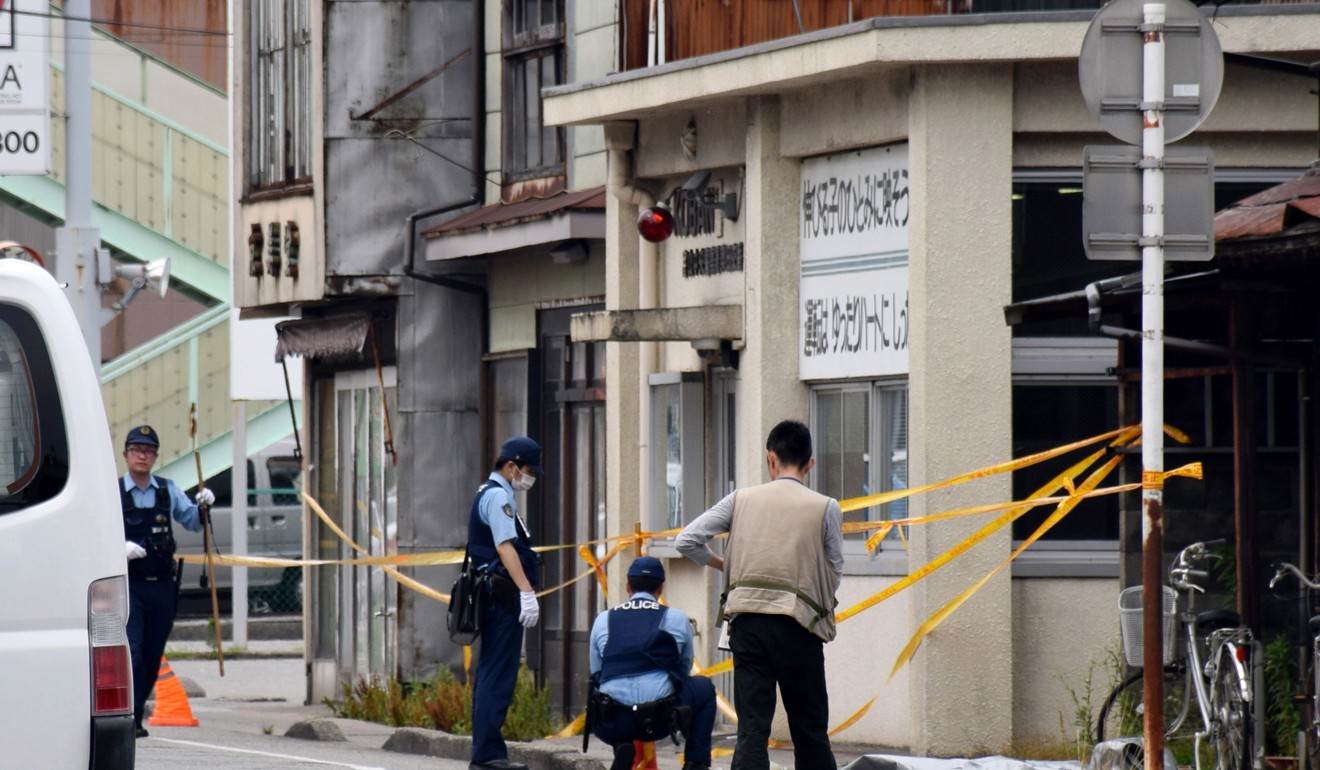
Japan ups security for ‘koban’ police boxes after violent attacks on officers
- Japan has a low crime rate but in the past 16 months, four officers have been attacked while in their police boxes, mostly through stabbings although one attacker used a hammer
- While attacks on police are not common, enhanced security measures will include installation of CCTVs and reinforcing barriers to stop ramming attacks
Koban is a compound of the Japanese words for “rotation” and “standing watch”. These facilities ensure a visible police presence in many towns and cities, which is credited as a major factor in the nation’s low crime rate. In the past 16 months, though, there have been four incidents of intruders assaulting uniformed officers.
In June, Suzunosuke Kose, 26, was stabbed in the chest and legs and left in a coma outside a koban in the city of Suita after two of his colleagues responded to an emergency call that turned out to be a false alarm. The following day, officers apprehended 33-year-old Yujiro Iimori about 8km from the scene.
Police discovered a knife and Kose’s loaded pistol in his backpack. Iimori, registered as being mentally disabled, denied attacking the officer.

In January, a university student used a hammer to attack a senior police officer at a koban in the city of Toyama, southern Japan. He was later charged with robbery and attempted murder.
Last year, former soldier Keita Shimazu was charged with murder after fatally stabbing officer Kenichi Inaizumi in a police box in Toyama. He took Inaizumi’s service weapon and shot dead a security guard at a nearby junior school before he was apprehended.
Three months later, university student Yuta Aizawa entered a koban in the city of Sendai at about 4am and fatally stabbed Hiroaki Seino. A second officer told Aizawa to drop his knife and a gun that later turned out to be a replica. The assailant ignored the warning and the officer opened fire, killing Aizawa.
How to kill Hong Kong police’ and what comes next
In response to these incidents, the National Police Agency requested a budget of 280 million yen (US$2.6 million) for additional protective measures. These will include CCTV cameras outside koban allowing officers to monitor suspicious activity, counters with reinforced glass and barriers to stop ramming attacks.
There are 6,253 police boxes across Japan, as well as 6,296 police substations, which are slightly larger and have accommodation for officers to spend the night. Officers stationed at koban and substations arrested 151,901 people in 2018, according to the Mainichi newspaper, accounting for nearly 74 per cent of all arrests.
“The koban system has been effective because it is a visible police presence in an area of a town, whether that’s a wealthy district or a less wealthy area,” said Jun Okumura, an analyst at the Meiji Institute for Global Affairs.
“Even when a koban is empty, when officers are out on patrol on their bikes or on foot, for example, then it is still there and a reminder that the police are not far away. I’m not sure koban can take all the credit for falling crime rates in general, but these attacks on the police mean these added precautions they have announced are sensible.
“No one can protect themselves entirely against a person who wants to cause a problem but this should make it easier for the police.”
Ex-military attacker ‘stabs Japanese police officer to death
According to the National Police Agency, there have been eight cases of police officers being attacked for their service weapon in the last six years, with half of those being in the last 16 months. Police have not commented on the theft of a gun as a possible motive in any of the cases.
“Attacks on the police used to be more common in the 1960s and early 1970s, when radical left-wing students were protesting, but that dropped off sharply at the end of the ‘70s as political protests died out,” said Okumura.
Philippines police chief lost moral standing over ‘ninja cops’ scandal: critics
“There may be no rational explanation for this sudden increase in cases of the police once again being targeted, but it is possible that as each of the incidents has been widely reported, these are people who have read that the perpetrator was able to get a gun and they have decided to do the same,” he said.
Guns are extremely difficult to obtain in Japan, Okumura pointed out. “For something as rare as this, that may be the best explanation that there is.”

